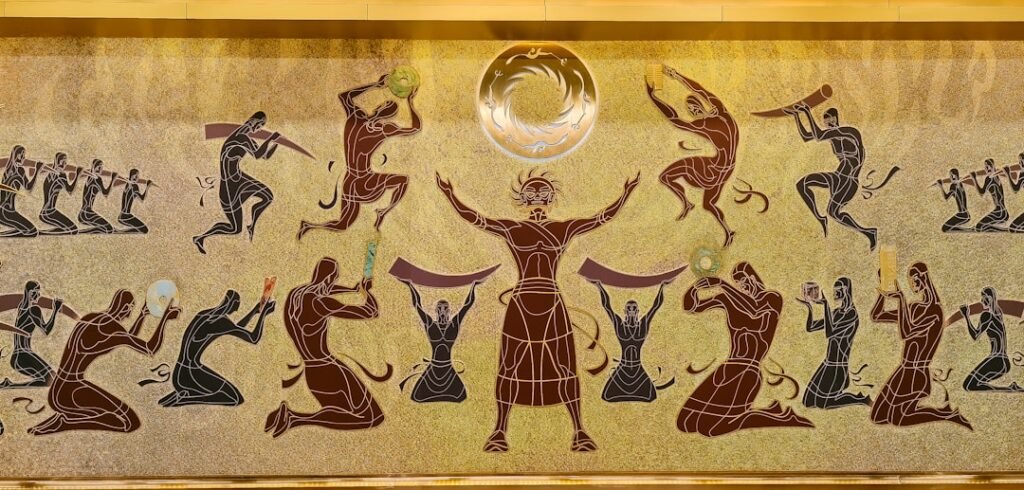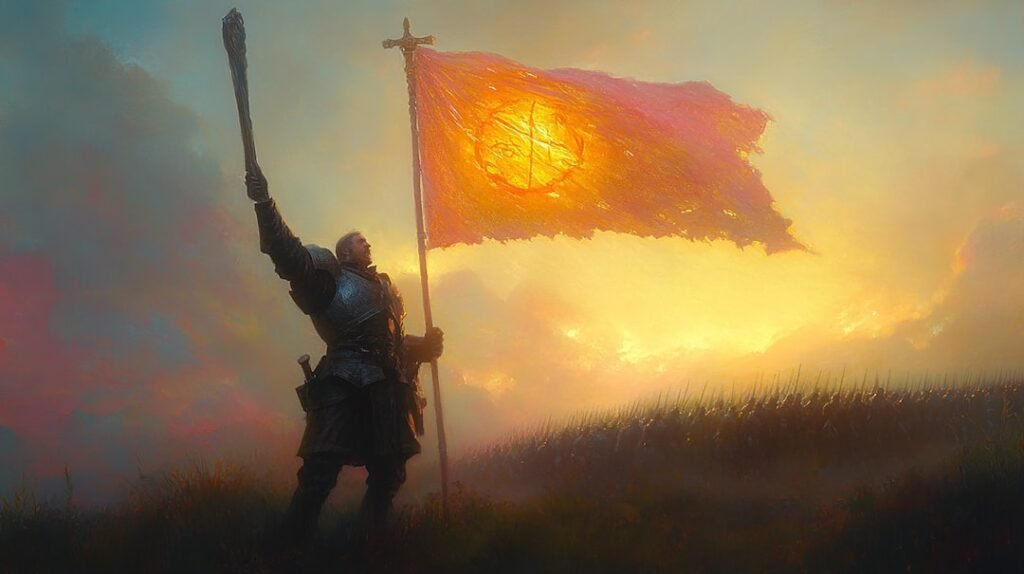When you gaze up at the night sky, you’re seeing the same stars that guided ancient kings, influenced cultural revolutions, and shaped the destinies of entire civilizations. The zodiac we know today carries within it the fingerprints of humanity’s greatest empires, each constellation echoing the wisdom of forgotten astronomers and star-gazers. Some signs hold deeper connections to these ancient worlds than others, carrying the weight of millennia in their symbols and stories.
The relationship between astrology and ancient civilizations runs far deeper than you might imagine. From the dusty temples of Babylon to the towering pyramids of Egypt, from the sacred groves of Celtic druids to the mysterious cities of the Maya, certain zodiac signs have been woven into the very fabric of human history. These connections reveal how our ancestors understood the cosmos and their place within it.
Scorpio: The Babylonian Legacy of Transformation

The emphasis on a zodiacal division of the constellations was first advanced in Babylonia and in other branches of Mesopotamian civilization. The Babylonians were the first people to systematically apply myths to constellations and astrology and describe the twelve signs of the zodiac. Scorpio stands as one of the most ancient and recognizable signs, its scorpion form barely changed since its creation in ancient Babylon over 2,500 years ago.
Approximately 2000 B.C., Babylonian astrologers believed that the Sun, Moon, and the five planets known at that time possessed distinct powers. Mars, for example, appeared to be red and was associated with aggression and war. Scorpio’s connection to Mars and its transformative power made it particularly significant to Babylonian priests who viewed celestial movements as divine messages.
The Babylonians saw Scorpio as a guardian of the underworld, its sting representing death and rebirth. This interpretation traveled through Greek culture and remains central to modern astrology, making Scorpio one of the most historically consistent signs across civilizations.
Aries: The Greek Foundation of Western Astrology

The Babylonians developed 12 astrological signs, some of which were later incorporated into the Western zodiac. However, it was the ancient Greeks who named these 12 star signs after constellations and linked them to specific dates based on their alignment with the sun’s orbit. These signs are Aries, Taurus, Gemini, Cancer, Leo, Virgo, Libra, Scorpius, Sagittarius, Capricornus, Aquarius, and Pisces.
Back at the time of the Greeks, the first day of spring started when the sun appeared in the constellation Aries and then everything was marked from that time forward around this cardinal point. Aries became the beginning of the zodiacal year, marking the vernal equinox and the renewal of life.
The Greeks elevated Aries beyond its Babylonian origins, connecting it to the myth of the Golden Fleece and the god Ares. This sign represents the bridge between ancient Mesopotamian astronomy and the Western astrological tradition we recognize today. Its position as the first sign reflects its fundamental role in organizing our understanding of celestial time.
Capricorn: Egyptian Connections to Divine Order

The Egyptian calendar stated there were 365 days in a year divided into twelve months of thirty days each, plus five additional days, with five remaining days which were viewed as outside the typical calendar year. Each month was subsequently divided into three, ten-day sections called decans which meant there were 36 decans in the year, based on the 36 constellations or patterns of stars that appeared at night. The Egyptian astrological signs consisted of various gods and an important marker in the human landscape, the Nile.
It traces the system’s origins to the 2nd millennium BCE and the Ptolemaic era, when zodiac signs were associated with gods. The Egyptian calendar, based on the Nile’s cycles and decans (10-day star periods), played a vital role in timekeeping and prediction. Capricorn’s goat-fish symbolism connects directly to ancient Egyptian flood cycles and agricultural planning.
The sign’s association with structure, authority, and time reflects the Egyptian obsession with cosmic order and divine kingship. Egyptian pharaohs often identified with Capricorn’s steadfast nature, seeing themselves as earthly representatives of celestial stability.
Sagittarius: The Archer’s Journey Through Cultures

For example, dhanu means “bow” and corresponds to Sagittarius, the “archer”, and kumbha means “water-pitcher” and corresponds to Aquarius, the “water-carrier”. The correspondence of signs is taken to suggest the possibility of early interchange of cultural influences, but while it is generally assumed that the similarity between the symbols in both systems is because of a Greek presence c. 50 BC, but it is contended this is supposition, and that there is clear evidence of trading between the Sumerian and Babylonian cultures and the Indus Valley Culture millennia before the Greeks were ever in Asia.
Sagittarius reveals fascinating connections between ancient civilizations through trade routes and cultural exchange. The archer symbol appears independently in multiple ancient cultures, suggesting either common cosmic observation or active cultural transmission.
These symbols represent astrological signs like Sagittarius and Scorpio, which were well-preserved due to the accumulated dirt. Recent archaeological discoveries at Egypt’s Temple of Esna have revealed remarkably preserved Sagittarius symbols, confirming the sign’s widespread adoption across ancient Mediterranean cultures. This sign embodies the spirit of exploration and philosophical inquiry that characterized many ancient civilizations.
Gemini: Maya and Mesoamerican Time Wisdom

Perhaps as far back as 3,000 years a unique form of astrology began to evolve in the Mesoamerican region of the New World, today’s Mexico and northern Central America. A sequence of 20 signs, not of space like our Western zodiac, but of time, evolved and became the core of a great astrological tradition that has been perpetuated up to the present time. The key to this tradition and the framework within which the 20-signs cycle is the 260-day astrological calendar.
While Mesoamerican astrology differs radically from Western traditions, the concept of duality central to Gemini appears throughout Maya and Aztec cosmology. Mayan astrology is a variation of Mesoamerican astrology, one of the most forward-thinking kinds of astrology of its time. The Mayan Calendar, or Tzolk’in, is comprised of 20 Day Signs and 13 Galactic Numbers, making a 260-day ritual calendar.
The Maya understanding of twin forces and complementary opposites mirrors Gemini’s dual nature. Though their systems operated on completely different principles, both traditions recognized the fundamental importance of paired energies in cosmic understanding.
Leo: The Solar Legacy of Ancient Egypt

Farmers used the skies as a calendar as long ago as Ancient Egyptians, when the rising of Sirius, the Dog Star, around mid-July, was seen as a marker of the imminent annual flooding of the Nile. Leo’s connection to ancient Egypt runs deeper than its solar associations, linking directly to the civilization’s most sacred astronomical observations.
The lion has been a symbol of divine kingship and solar power across multiple ancient cultures, but nowhere more significantly than in Egypt. The Great Sphinx, facing east toward the rising sun, embodies Leo’s regal and solar nature. Key celestial bodies like Sirius had deep symbolic meaning.
Egyptian pharaohs identified strongly with Leo’s characteristics, seeing themselves as earthly manifestations of solar power. The sign’s association with leadership, courage, and divine authority directly reflects the pharaonic concept of godlike rulership that defined Egyptian civilization for millennia.
Taurus: Celtic Connections to Earth Wisdom

Celtic astrology, often referred to as Druid astrology, traces its roots back to the Celts, a group of tribal societies in Iron Age and Medieval Europe. The Druids, the learned class among the Celts, were the keepers of this mystical knowledge. They were deeply attuned to the rhythms of nature, observing the lunar cycles, the changing seasons, and most importantly, the sacred trees.
While Celtic astrology operated on completely different principles than Mediterranean systems, the Celtic Druids believed that trees were given these spirits, who dwelt within, and were perceived as attributes of the Supreme Being. This earth-centered spirituality resonates strongly with Taurus’s connection to material stability and natural abundance.
Unlike the sun-centered zodiac of Western astrology, Celtic astrology centers primarily on trees and their seasonal cycles, reflecting the deep reverence the Celts held for the natural world. Taurus embodies this same reverence for the physical world and seasonal rhythms that defined Celtic civilization. The bull’s association with fertility and agricultural abundance connects directly to Celtic seasonal festivals and earth-based spirituality.
Aquarius: The Water-Bearer’s Ancient Symbols

For example, dhanu means “bow” and corresponds to Sagittarius, the “archer”, and kumbha means “water-pitcher” and corresponds to Aquarius, the “water-carrier”. The water-bearer symbol appears across multiple ancient civilizations, from Mesopotamian flood myths to Egyptian Nile ceremonies.
The Egyptian astrological signs consisted of various gods and an important marker in the human landscape, the Nile. Aquarius connects to the vital importance of water management in ancient civilizations, representing not just physical water but the flow of knowledge and innovation.
The sign’s association with revolutionary thinking and technological advancement reflects how ancient civilizations viewed water management as the foundation of social progress. From Mesopotamian irrigation systems to Roman aqueducts, Aquarius embodies humanity’s oldest struggle to harness natural forces for collective benefit.
The Lasting Legacy of Ancient Wisdom

Astrology has shaped civilizations for centuries, from Babylonian priests to Roman emperors, and continues to provide guidance for younger generations seeking clarity today. Though zodiac signs and horoscopes might appear modern, astrology has profoundly shaped civilizations across millennia.
These connections between zodiac signs and ancient civilizations reveal something profound about human nature. Under Ptolemy the planets, Houses, and signs of the zodiac were first explained in great detail while their function set down hasn’t changed much compared to the present day. The same cosmic patterns that guided ancient kings and queens continue to resonate with people today.
The fact that these symbols have survived wars, religious upheavals, and cultural transformations speaks to their fundamental relevance to human experience. Whether you believe in astrology or not, you cannot deny the remarkable persistence of these ancient symbols in modern consciousness. They represent humanity’s oldest attempt to find meaning in chaos, order in uncertainty, and connection in an vast, mysterious universe.
What do you think about these ancient connections? Tell us in the comments which civilization’s approach to the stars resonates most with your own understanding of cosmic influence.

Jan loves Wildlife and Animals and is one of the founders of Animals Around The Globe. He holds an MSc in Finance & Economics and is a passionate PADI Open Water Diver. His favorite animals are Mountain Gorillas, Tigers, and Great White Sharks. He lived in South Africa, Germany, the USA, Ireland, Italy, China, and Australia. Before AATG, Jan worked for Google, Axel Springer, BMW and others.




